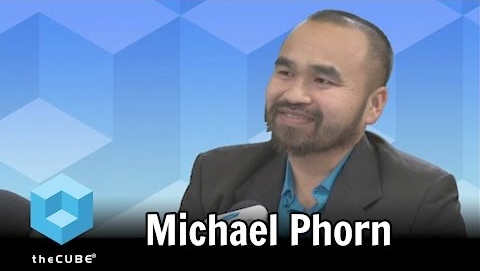 EMERGING TECH
EMERGING TECH
 EMERGING TECH
EMERGING TECH
 EMERGING TECH
EMERGING TECH
Businesses must upgrade and adapt to stay competitive. That includes their IT hardware and programs. However, companies prefer to hang on to their legacy systems for a number of very good reasons including skill concerns and custom applications. Likewise, not every business can afford the latest and greatest every three years. Because of this, the technology of the future must also work with the technology of the past.
“As businesses grow, their landscapes become heterogeneous, they’re trying to integrate best of breed software,” said Michael Phorn (@thesapmic), product manager of the HANA Cloud Platform, now known as the SAP Cloud Platform.
Phorn was speaking with John Furrier (@furrier), co-host of theCUBE, SiliconANGLE’s live-streaming studio, on location in Palo Alto, CA, about how using a platform that can integrate multiple systems is the way to run all that software.
Furrier and Phorn also discussed events at this week’s Mobile World Congress in Barcelona, Spain. (*Disclosure below.)
The conversation started with a look at how businesses can leverage their current tech investments while also addressing upcoming innovations. Phorn explained how the SAP Cloud Platform gives companies the tools and services to bring in new innovations like Internet of Things devices and machine learning without disrupting their current systems.
“If the technology is done right, the underlying layer should be almost invisible. It doesn’t matter if the company is using five or six systems,” Phorn said. SAP Cloud gives them a way to integrate those systems under one experience and one user interface.
Phorn then spoke about the how of integration. When a company is integrating systems, it’s best to do so through well-defined APIs. This prevents the systems from becoming dependent on each other. If one part of the whole system changes, the other parts can keep running.
What SAP SE sees is a trend toward customers using standard products rather than highly customized systems that can’t easily be upgraded. “Customers don’t want to be tied into any one vendor,” Phorn said.
It’s also important for companies to be comfortable with the software they use. SAP and HANA do this with services set on top of the platform that let companies build the software they want to use. “This tech isn’t meant to replace people, but to augment what they do,” Phorn said. He then mentioned a lot of services will come out soon to aid the developer.
Watch the complete video interview below, and be sure to check out more of SiliconANGLE and theCUBE’s coverage of the Mobile World Congress 2017 Barcelona. (*Disclosure: SAP was the sponsor of this segment. SAP has no editorial control over content on theCUBE or SiliconANGLE.)
THANK YOU